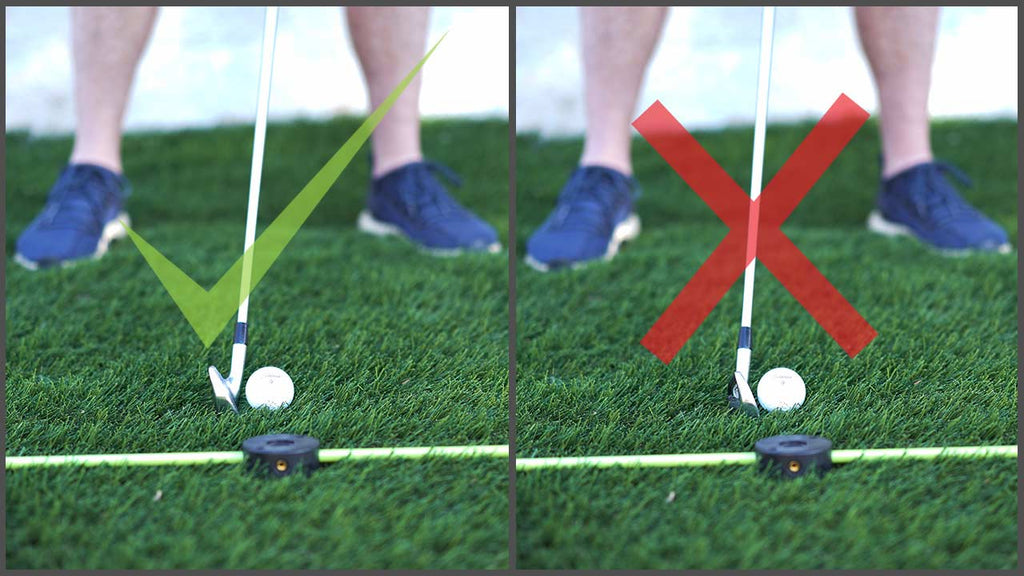
For a golf swing to be successful, it is important to have a proper weight distribution. Amateurs often struggle to find the right weight distribution. To achieve the perfect balance, 80-20 is the starting weight and 90-10 at the end. Amateur golfers sometimes find it difficult reaching an 80-20 weight distribution. It is important that you change your posture and pay attention to your weight distribution in order to fix this problem.
Stack and Tilt method
The Stack and Tilt method is a proven strategy that distributes weight in the golf swing. It has proven to be extremely useful for many professionals. Many top golfers have used this technique, including Justin Rose and Sean Foley. Some PGA Tour students have also used this technique.
This involves moving the primary balancing knee from the hips towards the knee. This allows the body to rotate freely without causing compression to the vertebrae of the lumbar spine. This creates an inner-out path which causes a slight right/left draw spring. Critics of this weight distribution method in golf argue that it can lead to a lack or athleticism, and a loss in distance.

Traditional golf instruction
Traditional golf instruction suggests that you should place your weight on the balls of both your feet. But this is wrong. This technique can cause problems with your body, including poor ball striking. It can also lead to weak power and inconsistent consistency. There are some easy things you can do that will help you distribute your weight correctly.
Proper weight distribution
For a good golf swing, it is important to have a proper weight distribution. For a good golf swing, the weight should be equally distributed between the heel (and the toes) Improper swing paths are caused by excessive weight in the feet. An incorrect club face position at impact can also cause an imbalance, which can decelerate your club as it hits the ball.
Start the swing by evenly distributing your weight between your legs. This will ensure that your weight transfers smoothly to the ball. In the downswing your weight should also shift to your lead leg. Your weight should reach eighty percent when you are approximately fifty-five at the top. Then, use impact and release to release the weight onto your front foot. This is an area that amateur golfers have difficulty with. Check your posture and weight distribution to see if you're having trouble with this.
Correcting a wrong weight distribution in a golf swing
A wrong weight distribution in the golf swing can make a big difference in your performance. You could have an incorrect strike, poor power or poor contact. This problem can be corrected with exercises. These exercises will help balance your weight so that you have a stable swing.

The first thing to do is to check your swing weight. You may be leaning or swaying if you have too much weight between your toes and heels. Equal weight should be distributed between your front- and backfoot at the tops of your backswing. This will keep your swing in sync and help you achieve the best ball flight. Your weight should be sufficient to transmit energy to the ball at impact.
FAQ
How do I learn to play golf?
Golf is a skill that takes practice and time. It is possible to improve your game with practice. Here are some tips to help:
-
Practice regularly. Golf requires concentration and constant attention. If you don't practice enough, you will not improve your skills.
-
Play with people who play. Playing with other people helps you develop your own style of play.
-
Before you start playing, make sure to read up on golf. This will help you get a sense of the things you should work on.
-
Don't try and master everything at once. Start by focusing on one aspect of your game. For example, focus on improving your putting or learning to chip. Move on to the next area of your game when you feel confident.
-
Take lessons. You can learn important things such as stance, swing speed and posture.
-
Try new techniques. Experiment with different grips, stances, swings, and so on.
-
Keep records. Keep track of your progress by recording your scores. You can then see your strengths and weaknesses.
-
Join a local golf club. Many clubs offer free lessons. Clubs often have welcoming members who are eager to help newcomers.
-
Locate a coach. A coach can offer guidance in certain areas.
What is a golf ball like?
Golf balls are usually made of rubber and plastic. Its surface has dimples which make it bounce when hit.
What is a handicap?
Sometimes it can be difficult to keep up with your fellow golfers. You might also find yourself struggling to score well because you are too slow or too fast. To overcome these problems, you could hire a caddy to carry your bag for you.
For beginners, it is a good idea to take advantage of local services. They will calculate your handicap using age, gender, height and weight as well strength and skill levels.
Your handicap will then serve as a guideline for calculating your score. Your handicap will tell you which group you belong in. This will help you compete better against other players with similar abilities.
When is the best time to play golf in the year?
Playing golf between May-September is the best time. This time, it is usually mild and there is no rain.
It can get very cold in winter. Additionally, it can be difficult to walk the fairways when there is snowfall.
The grass can grow too high in spring and autumn making it difficult to see the flagstick.
Statistics
- In the United States, women made up 25 percent of golfers in 2021, which was up from 19 percent in 2011, and junior female golfers account for 35 percent or 1.1 million golfers.[50] (en.wikipedia.org)
- They do this by means of assessing and rating courses according to the average good score of a "bogey golfer," a player with a handicap of around 20. (en.wikipedia.org)
- Buying a set of Titleist or Taylor-Made irons for nearly $1,000 is simply not necessary and likely a waste of money. (golficity.com)
- In the United States, the number of people who play golf twenty-five times or more per year decreased from 6.9 million in 2000 to 4.6 million in 2005, according to the [51] (en.wikipedia.org)
External Links
How To
How to Hit the Perfect Bunker Shot
A bunker shot is a type golf shot that you aim at a certain spot on the hole (the green) to ensure your ball does not bounce off the surface. You can take advantage of the slope on the green to do this. The idea is to get the ball into the most direct path possible towards the hole.
Golf is all about finding the best line to get to your goal point. It is important to consider factors like distance to the target, terrain type, whether the ball has to bounce off of the ground or fly straight and weather conditions.
Understanding the laws of physics is essential to executing a flawless bunker shot. To start, determine whether your bunker shot is going uphill or lower. If you're looking uphill, you will need to use a drawing tool. You will need to swing with a fade if your face is downhill. Next, you'll need to figure out how fast you need to move your body in order to stop the ball from bouncing off the green. This can be done using the angle between you and the ball. Next, determine the dimensions of the bunker you want to aim at.
After you have figured out these basics, you can begin swinging. Just like any other shot, you should be able to swing the ball hard enough that it passes the club head's face but slow enough to prevent it from bouncing off of the green. Once you have established the correct speed and trajectory for your shot, you can then begin to plan your approach. Slowly approach the ball, until you can clearly see the landing zone. Before you release the ball, take a final look at it. If all goes according to plan you will have a flawless bunker shot.